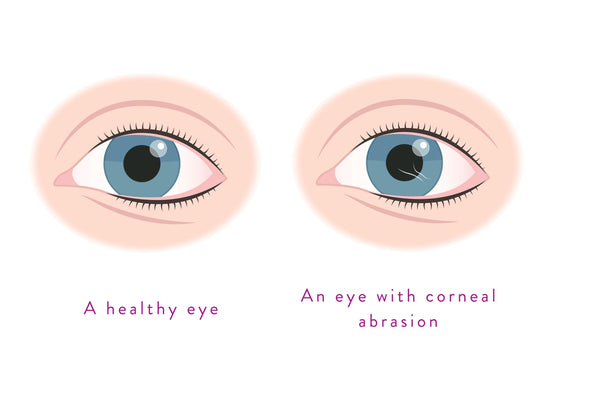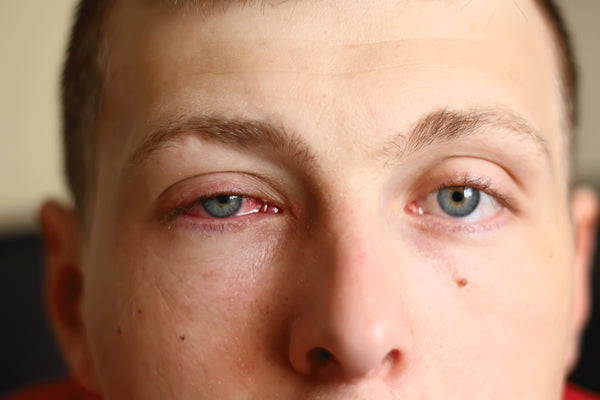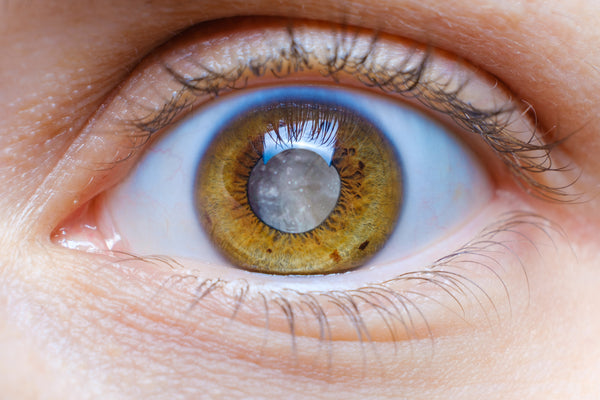
Most of us will experience some form of presbyopia during our lives. This is a type of age-related far sightedness. It happens over time and usually becomes noticeable as you enter your 40’s. Here’s everything you need to know about presbyopia.
What is presbyopia?
Presbyopia, also called age-related long-sightedness, is the gradual loss of being able to see objects close-up. It usually becomes noticeable in your early to mid-40s and gets worse until you’re around 65. It’s not a cause for concern because it is a natural part of ageing, so it’s nothing to worry about. It’s easy to continue to live a healthy and fulfilling life with presbyopia – all you need is a new or adjusted glasses prescription. There are many management options available including reading glasses, multifocals, multifocal contact lenses, or a combination of both.
Presbyopia vs myopia
Myopia and presbyopia are both issues with your eyesight but they are very different. Presbyopia only affects your close-up vision, making objects close to you look blurry. In contrast, myopia doesn't affect your close vision. Instead, things in the distance appear blurry instead.
What are the symptoms of presbyopia?
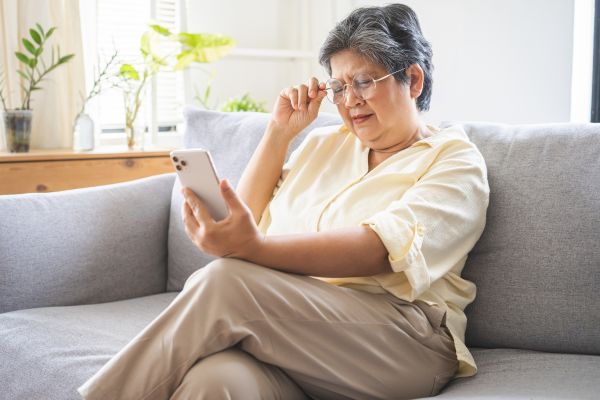
If you’ve noticed that text has started looking a little blurry or you need to size up the font on your phone, you may be experiencing the first symptoms of presbyopia. There’s nothing to be concerned about as it’s a normal part of ageing but it might be time to visit your local Leightons branch for an eye test.
The common symptoms of presbyopia include:
- Blurry vision when trying to look at things up close.
- Having difficulty reading text.
- Eye strain or eye migraines after reading or doing tasks up close.
- Needing brighter lighting when reading or doing close work.
- Overall problems seeing and focusing on objects that are close to you.
- Squinting to bring objects into focus or needing to hold objects further away from you to bring them into focus.
What causes presbyopia?
Presbyopia is caused by changes in the flexibility of your eyes’ lenses. The clear lens, which sits behind your iris, changes shape to focus light onto your retina, allowing you to see clearly. After the age of 40, your lens loses some of its flexibility and becomes more rigid, so it can’t change shape as easily. This makes it harder to refocus your eyes on objects that are closer up.
Presbyopia risk factors
Some risk factors that increase your chances of developing presbyopia include:
- Age – the biggest risk factor as almost everyone over the age of 40 experiences some form of presbyopia.
- Medical conditions – conditions like diabetes, multiple sclerosis or cardiovascular diseases can increase your risk of premature presbyopia before the age of 40.
- Drugs – Some drugs such as some types of antidepressants, antihistamines and diuretics are associated with premature presbyopia.
Treatment options for presbyopia
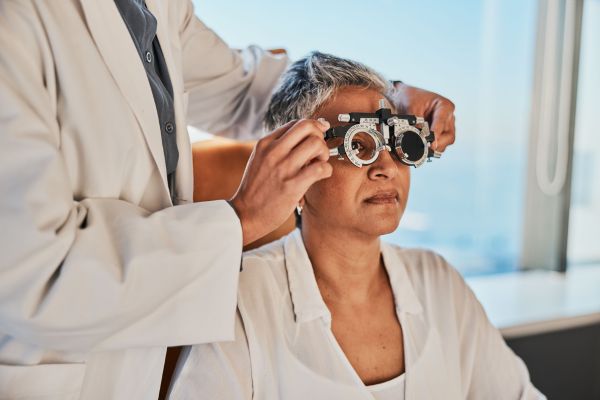
Age-related far-sightedness can’t be stopped or prevented as it is a perfectly natural development. However, there are multiple treatment options available to help correct your vision and stave off eye strain, headaches, and needing to have your phone font set to size 50.
Presbyopia glasses
Wearing near-sighted prescription glasses, also known as reading glasses, and help correct your vision affected by presbyopia. There are a few different types of lenses you can choose from, such as single-focus lenses and multi-focal lenses, which have dedicated zones in the lenses to look through for different tasks.
Presbyopia contact lenses
If you prefer contact lenses to traditional glasses, you can also get contacts to help correct your vision with presbyopia.
Multifocal contact lenses are designed just like multifocal glasses – with different zones you look through depending on what you’re looking at.
Standard contact lenses can be used to correct Presbyopia. This is known as monovision, and the Optician will fit you with a distance vision lens in one eye and a near vision lens in the other. Initially, this can take some getting used to and is less common than using a multifocal contact lens.
Presbyopia surgery
There are surgeries available that can help to correct presbyopia.
- Refractive surgery – The surgeon will use a laser to reshape your cornea (the clear part in front of your pupil) for clear far vision in one eye and close-up vision in the other. You may have monovision contact lenses recommended to trial whether this type of vision is right for you before the procedure.
- Corneal inlays – Small devices surgically implanted into your cornea to restore close-up vision.
Your optometrist can advise you further on what surgery options are available.
Takeaway
Most people over the age of 45 will experience some form of age-related far-sightedness. Presbyopia is a natural part of the ageing process and because of this, it is easily managed through the wearing of glasses and contact lenses or via surgery. If you’ve noticed any of the symptoms of presbyopia, even if you aren’t yet in your 40s, speak to your optometrist or book in for an eye test.




